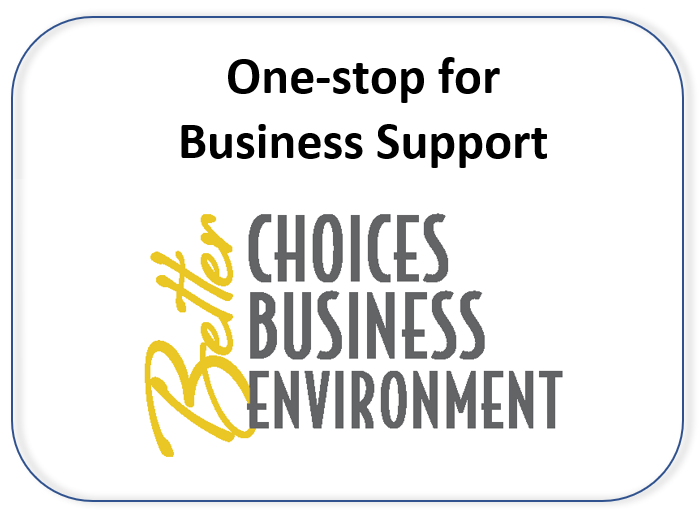Green Tier and Environmental Management Systems
An environmental management system, or EMS, is a leadership tool for strategic planning and risk management. The systematic approach helps organizations understand their impacts and operate more efficiently. It encourages top-down and bottom-up improvements, standardizes consistent performance, identifies risks and facilitates goal setting to maximize efficiency and profitability. Green Tier places great value on environmental management systems because of their potential to help protect public health and natural resources in Wisconsin.
BENEFITS OF ENVIRONMENTAL MANAGEMENT SYSTEMS
Innovative approaches to environmental management can help to build relationships, impress existing clients, and attract new ones. Investing in an EMS can create numerous benefits to your business and the environment, including:
Improve profits and efficiency
An EMS can be used to find profitability in areas that otherwise would be an expense. The system provides a structure to improve efficiency by identifying areas that cost money, assessing options for producing value and finding an alternative solution.
Minimize environmental risks
Environmental risks are legitimate business risks that can impact profits. Global changes create challenges for businesses, so it is a good strategy to stay ahead of the curve. Holistic or life-cycle perspectives that are integrated into an EMS can help paint the picture of the broader environmental impacts of an organization. When risks are addressed effectively, it positions the business to become more sustainable and resilient.
Prevent costly compliance issues
Violations can be very expensive! A strong EMS provides the tools and processes to manage regulatory requirements efficiently. The EMS can be used to identify legal requirements as significant aspects to stay on track with compliance. Monitoring and documentation procedures included within an EMS help to ensure that businesses are able to avoid compliance issues.
Improve relationships with the community
Clear communication and transparency procedures established through the EMS help businesses to build strong relationships with their communities and employees.
Improve employee retention and engagement
Studies have shown that employees and prospective employees are more likely to remain with companies that have active sustainability or environmental improvement strategies, like an EMS. Employee retention is important for continuity and the overall success of businesses.
Demonstrate a commitment to sustainability
Commitment can be demonstrated throughout an organization when all employees buy into the system. Leaders can wield their EMS to keep the environment at the forefront of decision-making processes and propel the organization to find solutions that help them become more sustainable.
Make progress towards long-term goals
Incremental progress over time is a characteristic that can help move the needle on long-term goals and projects conducted as part of the EMS. The objective and target structure defines the big objective and establishes incremental targets to work towards continual improvement.
Position the organization for the future
An EMS drives innovation by setting forward-thinking environmental goals. This signals that an organization has a plan to be successful and resilient, helping them keep the trust of their stakeholders.
Those who dedicate time and effort to their EMS often realize greater benefits than anticipated, because their system guides the exploration of new opportunities that are compatible with current practices.
The EMS helps organizations go above and beyond their minimum compliance requirements and produce superior environmental performance, which is a key component of Green Tier participation.
All the benefits that are created by environmental management systems contribute to a healthier environment and a more vibrant economy in Wisconsin, driven by each organization’s journey for continual improvement.
Using a Systems Based Approach
The "Plan-Do-Check-Act" cycle is the fundamental process that is used by each EMS to manage environmental impacts and create opportunities for continual improvement.
The cycle helps manage processes, resources, and activities to achieve planned results by identifying the operations that are important, have significant impacts or cost money.
Looking closer at each area can help identify ways to add value and reduce risks.
Plan
"Plan" refers to the development and continual improvement of the EMS. Organizations change over time, and the EMS should be a tool to help adapt to change. In the planning phase, organizations formulate their environmental policy, identify their environmental aspects, establish roles and responsibilities, develop operational controls and set specific goals to improve their environmental performance.
Do
"Do" refers to the implementation of the EMS. This is where leadership delegates responsibilities, conducts employee training, communicates goals with employees and implements the processes that were developed to achieve their goals.
Check
"Check" refers to the regular assessments, or audits, of the EMS. This provides an opportunity to review the environmental impacts and the current progress towards achieving the established goals. Organizations that implement an EMS are required to complete self-assessments in addition to hiring third-party auditors to review the effectiveness of their systems.
Act
"Act" refers to adjusting the EMS based on the results of the regular assessments. This is where leadership takes an active role to evaluate their effectiveness. Management can make changes and adjustments to help ensure that the organization is on track by implementing corrective and preventative actions.
This cycle leads organizations to find new and innovative ways to incrementally improve the environmental aspects of their business through their goal setting processes.
More detailed information about implementing an EMS that follows the Plan-Do-Check-Act cycle can be found in The US EPA’s 27-step guide to develop an EMS.
STANDARDS FOR ENVIRONMENTAL MANAGEMENT SYSTEMS
Green Tier participants at the Tier 1 and Tier 2 levels are required to use an EMS to improve their environmental footprint. Green Tier recognizes two EMS formats. Participants may implement either the ISO 14001 Standard or a Functionally Equivalent system. Click below to learn more!
ISO 14001 Standard
The International Organization for Standardization (ISO) creates frameworks for management systems that meet the criteria needed to produce continual improvement.
The ISO 14001 standard is a voluntary certification for an EMS. Organizations can use this framework to meet their compliance requirements and establish a program for continual improvement of their touchpoints with the environment.
More information on the ISO 14001 standard can be found on the ISO website.
Green Tier Functionally Equivalent
Functionally equivalent management systems follow a flexible structure designed to achieve the environmental outcomes defined in the Green Tier law.
This type of EMS was created to provide an option for organizations who seek an alternative approach to the ISO standard that achieves similar results.
More detailed information about developing and implementing a Functionally Equivalent EMS under Green Tier can be found in Environmental Management Systems & Functional Equivalency (CO-503).
Both structures are designed to produce the outcomes of superior environmental performance, because they lay out a process for organizations to achieve continual environmental improvement of their operations.
CREDIBILITY THROUGH VERIFICATION
A key component that makes an EMS a credible tool for environmental improvement is its built-in verification process. Organizations that implement an EMS are required to conduct self-assessments, as well as hire third-party auditors to evaluate the system’s effectiveness. Both ISO 14001 and Green Tier EMS standards require regular assessments.
Internal Audits
Self-assessments, or internal audits, provide organizations with an opportunity to evaluate the effectiveness of their EMS.
Through training, staff members are equipped to assess policies, procedures and performance to ensure compliance with both internal goals and external regulations. Internal audits help identify gaps, non-conformances and areas for improvement within the EMS.
This proactive approach fosters accountability by ensuring that corrective actions are taken before any potential issues escalate. Green Tier participants are required to conduct regular internal audits, which serve as preventative maintenance for a robust EMS that is geared for continual improvement.
External Audits
Third-party assessments, or external audits, are an impartial evaluation of an EMS's effectiveness by a professional auditor.
These assessments review an organization’s policies, procedures and performance to ensure they are following through on their commitments. Additionally, the external auditors validate the findings from internal audits and confirm an EMS is functioning as intended.
External audits provide an additional layer of oversight, ensuring that businesses adhere to environmental standards and demonstrate a genuine commitment to sustainability.
Green Tier participants are required to use approved external auditors at specific intervals, which helps ensure credibility and consistency with their evaluations.
Regular internal and external audits work together to create a reliable and transparent verification process. They add value as organizations strive for continual improvement, and they also give stakeholders confidence that the EMS is delivering tangible results. To learn more about the audit process and frequency required for Green Tier, please visit our Audits and Approved Auditors webpage.
ACHIEVING CONTINUAL IMPROVEMENT
An effective EMS with an integrated verification process not only drives continual improvement and operational efficiency but also demonstrates a genuine commitment to sustainability.
The concept of continual improvement is important because there is no end point. There are always new and exciting ways to improve and contribute to a healthier environment.
We have compiled links to case studies, best management practices, articles and tools that can serve as a source of inspiration for goals and projects to help participants along their path toward sustainability. Check out the Environmental Project Ideas tool!
Organizations can utilize their EMS to enhance resilience, build stakeholder trust, produce outcomes of superior environmental performance and contribute to a more sustainable future.
These attributes provide the DNR with a high level of confidence to recognize Green Tier participants for their dedication to improving the environment in Wisconsin.
HELPFUL RESOURCES
The following websites offer information that may help organizations implement an environmental management system to effectively manage environmental impacts:
- International Organization for Standardization (ISO) is the worldwide federation of national standards bodies that create the international agreements which are published as standards like ISO 14001.
- American National Standards Institute (ANSI) serves as the administrator and coordinator of the United States private sector voluntary standardization system and contains official and technical information about ISO 14001.
- United States Environmental Protection Agency (EPA) has an extensive website providing a complete understanding of environmental management systems and how to develop them.
- Green Tier Approved Auditors can provide external verification of environmental management systems for Green Tier participants. Some may also offer consulting services to help your organization develop an environmental management system.






